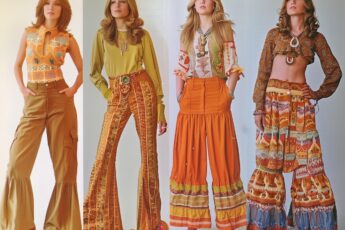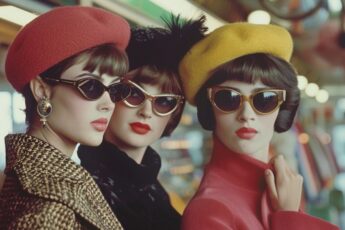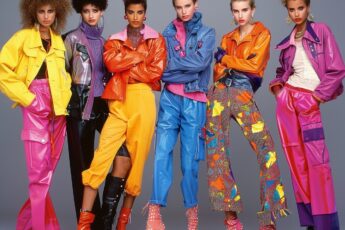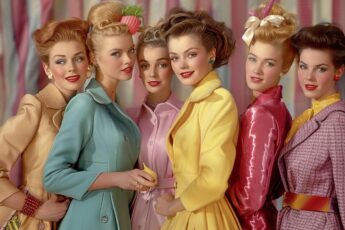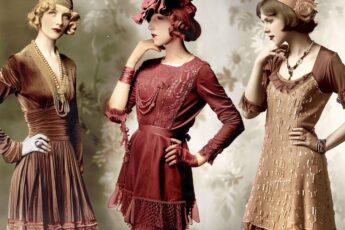Introduction to 1990s Fashion
I’ve always found the 1990s to be a fascinating decade. It was a time of radical change and diverse styles that left an indelible mark on the fashion world. The 90s saw a unique blend of cultural influences, from grunge music to hip-hop, shaping the way people dressed.
When I think about 90s fashion, three key elements come to mind:
- Rebellion against 80s excess
- Embrace street style
- Rise of minimalism
The decade began with a reaction to the flashy, over-the-top looks of the 1980s. People craved authenticity and individuality in their clothing choices. This shift paved the way for grunge, hip-hop, and other subcultures to influence mainstream fashion.
Key designers like Marc Jacobs, Calvin Klein, and Donna Karan played crucial roles in defining the aesthetic of the era. They took inspiration from youth culture and translated it into high fashion, blurring the lines between streetwear and luxury.
Fashion is about dressing according to what’s fashionable. Style is more about being yourself.
This quote perfectly encapsulates the 90s approach to fashion. It wasn’t about blindly following trends but about expressing oneself through clothing.
The decade also saw the rise of the supermodel. Names like Naomi Campbell, Cindy Crawford, and Kate Moss became household names, influencing fashion trends and aspirations.
Here’s a quick overview of some defining 90s fashion elements:
| Trend | Description |
|---|---|
| Grunge | Flannel shirts, ripped jeans, combat boots |
| Minimalism | Slip dresses, clean lines, neutral colors |
| Hip-Hop | Baggy jeans, oversized shirts, athletic wear |
| Retro | Platform shoes, bell bottoms, vintage looks |
As we delve deeper into each aspect of 90s fashion, we’ll explore how these trends emerged, evolved, and continue to influence style today. The 1990s were more than a fleeting moment in fashion history – they represented a seismic shift in how we approach personal style and self-expression through clothing.
Grunge Aesthetic
The grunge movement emerged from Seattle’s music scene and quickly became a defining style of the 90s. I remember when this raw, rebellious look first hit the mainstream – it was unlike anything we’d seen before.
Flannel shirts, ripped jeans, and combat boots formed the core of the grunge wardrobe. These pieces reflected the anti-establishment attitude of the music and its fans. The look was intentionally disheveled and DIY, rejecting the polished glamour of the 80s.
Key elements of grunge fashion included:
- Oversized, thrifted sweaters
- Band t-shirts
- Doc Martens boots
- Plaid patterns
- Beanies and messy hair
High-end designers soon took notice. Marc Jacobs famously created a grunge-inspired collection for Perry Ellis in 1992. While it got him fired, it cemented grunge’s place in fashion history.
True style transcends trends. It’s about wearing what feels authentic to you.
This ethos perfectly captures the grunge spirit. It wasn’t about following rules or looking perfect – it was about self-expression and comfort.
The influence of grunge extended beyond clothing. It ushered in a new beauty aesthetic too, with dark nail polish, smudged eyeliner, and unwashed hair becoming popular looks.
Minimalism in Design
As the 90s progressed, we saw a shift towards minimalism in fashion. This style, championed by designers like Calvin Klein, was a stark contrast to both the excess of the 80s and the grunginess of early 90s.
Minimalist fashion focused on:
- Clean lines
- Simple silhouettes
- Neutral color palettes
- High-quality fabrics
The slip dress became an iconic piece of 90s minimalism. It was versatile, elegant, and epitomized the “less is more” philosophy.
Here’s a comparison of minimalist vs. grunge styles:
| Minimalist | Grunge |
|---|---|
| Sleek | Disheveled |
| Monochromatic | Layered patterns |
| Tailored | Oversized |
| Luxe fabrics | Thrifted/worn |
I found this shift fascinating. It showed how fashion could swing from one extreme to another, yet both styles could coexist and define an era.
Minimalism wasn’t limited to clothing. It also influenced makeup trends, with natural, barely-there looks gaining popularity.
Simplicity is the ultimate sophistication.
This quote perfectly encapsulates the minimalist approach. By stripping away excess, designers created timeless pieces that still influence fashion today.
The minimalist trend also reflected broader cultural shifts. As we approached the new millennium, there was a desire for sleekness and modernity in all aspects of design.
Hip-Hop Fashion
Hip-hop culture significantly shaped 90s fashion. Its influence extended far beyond music, revolutionizing the way people dressed across the globe. The style was bold, expressive, and unapologetically loud.
Key elements of hip-hop fashion included:
- Baggy jeans
- Oversized t-shirts and jerseys
- Athletic wear as everyday clothing
- Chunky gold jewelry
- Sneakers, especially Air Jordans
Brands like FUBU, Tommy Hilfiger, and Polo Ralph Lauren became synonymous with hip-hop style. These labels understood the power of urban culture and actively courted hip-hop artists and fans.
Style is a way to say who you are without having to speak.
This quote captures the essence of hip-hop fashion. The clothes were a form of self-expression, often making bold statements about identity and culture.
I observed how hip-hop fashion blurred gender lines. Women adopted traditionally masculine styles, wearing baggy jeans and oversized jerseys alongside men.
Here’s a quick look at how hip-hop influenced different clothing categories:
| Category | Hip-Hop Influence |
|---|---|
| Headwear | Snapback caps, bandanas |
| Tops | XXL t-shirts, sports jerseys |
| Bottoms | Sagging jeans, track pants |
| Footwear | High-top sneakers, Timberland boots |
| Accessories | Chunky chains, large watches |
The impact of hip-hop on 90s fashion can’t be overstated. It brought street style to the forefront and changed the fashion landscape forever.
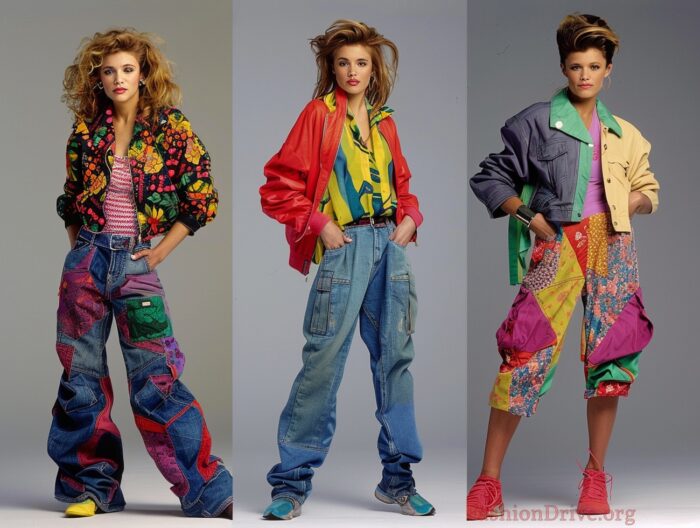
Supermodel Era
The 90s saw the rise of the supermodel, a phenomenon that dramatically influenced fashion and popular culture. These weren’t models – they were icons.
Names that defined the era:
- Naomi Campbell
- Cindy Crawford
- Linda Evangelista
- Christy Turlington
- Kate Moss
These women became household names, gracing magazine covers, dominating runways, and starring in ad campaigns. Their influence extended beyond fashion, impacting beauty standards and pop culture.
I don’t get out of bed for less than $10,000 a day.
This famous quote, attributed to a supermodel, encapsulates the power and status these women held in the industry.
The supermodel era brought high fashion to the masses. Runway looks quickly translated to street style as consumers sought to emulate their favorite models.
Key aspects of the supermodel influence:
- Glamorous runway looks inspiring everyday fashion
- Increased focus on fitness and body shape
- Rise of the “off-duty model” look
- Beauty products endorsed by supermodels
I noticed how supermodels each had distinct personas. This individuality allowed different types of beauty to be celebrated, although the industry still had a long way to go in terms of diversity.
Fashion magazines played a crucial role in the supermodel phenomenon:
| Magazine | Role in Supermodel Era |
|---|---|
| Vogue | Showcased supermodels in high-fashion editorials |
| Elle | Focused on the more accessible “girl next door” look |
| Sports Illustrated | Swimsuit issues made models household names |
The supermodel era left an indelible mark on 90s fashion, elevating models to celebrity status and bringing high fashion into everyday conversation.
Retro Revival
The 90s saw a fascinating resurgence of styles from previous decades, particularly the 1970s. This retro revival brought a playful and nostalgic element to 90s fashion.
Key elements of the retro trend included:
- Platform shoes
- Bell-bottom pants
- Psychedelic prints
- Crop tops
- Midi skirts
I found it intriguing how designers reinterpreted these vintage styles for a modern audience. They didn’t simply copy the past, but reinvented it.
Fashion is cyclical, but style is eternal.
This quote perfectly captures the essence of the 90s retro revival. While trends came back, they did so with a fresh, contemporary twist.
Vintage shopping became incredibly popular during this time. Thrift stores and flea markets turned into treasure troves for fashion-conscious individuals seeking unique pieces.
Here’s how different decades influenced 90s fashion:
| Decade | Elements Revived in the 90s |
|---|---|
| 1950s | Capri pants, cat-eye sunglasses |
| 1960s | Mini skirts, go-go boots |
| 1970s | Flared jeans, tie-dye prints |
| 1980s | Neon colors, shoulder pads |
The retro revival wasn’t limited to clothing. It extended to hairstyles (like the comeback of the bob cut) and makeup (think frosted lipsticks and blue eyeshadow).
This trend highlighted the cyclical nature of fashion and showed how past styles can be reinterpreted for new generations.
Techno and Rave Culture
The 90s rave scene had a profound impact on fashion, introducing a bold, futuristic aesthetic that was unlike anything we’d seen before.
Characteristic elements of rave fashion:
- Neon colors
- Reflective materials
- Oversized pants (often called “phat pants”)
- Plastic jewelry
- Futuristic accessories (like light-up gear)
I was fascinated by how rave culture blended fashion with technology. Glow sticks, LED accessories, and even battery-powered clothing became part of the look.
Fashion is the armor to survive the reality of everyday life.
This quote resonates strongly with rave fashion. The bold, otherworldly looks served as an escape from the mundane, allowing ravers to create fantastical alter-egos.
Body modifications also gained popularity in this scene. Piercings, vibrant hair colors, and even LED implants became ways for ravers to express themselves.
The influence of rave culture extended beyond clubwear:
| Mainstream Fashion | Rave Influence |
|---|---|
| Daywear | Bright color accents |
| Accessories | Chunky plastic jewelry |
| Footwear | Platform sneakers |
| Makeup | UV-reactive cosmetics |
Designers like Versace and Moschino drew inspiration from this youth culture, bringing elements of rave fashion to high-end collections.
The rave scene’s impact on 90s fashion showcased how subcultures can drive mainstream trends, pushing boundaries and introducing new forms of self-expression.

Androgynous Styles
The 90s marked a significant shift towards androgynous fashion. Gender boundaries in clothing became increasingly blurred, reflecting changing social attitudes and a growing acceptance of diverse gender expressions.
Key aspects of the fashion 1990s androgynous style included:
- Unisex clothing items
- Oversized silhouettes
- Minimalist designs
- Gender-bending looks in music and fashion
I observed how musicians like David Bowie and Annie Lennox influenced this trend, challenging traditional gender norms through their style choices.
Clothes have no gender. Wear what makes you feel authentic.
This sentiment captures the essence of 90s androgynous fashion. It was about personal expression rather than conforming to societal expectations.
Designers played a crucial role in popularizing androgynous styles:
| Designer | Contribution to Androgynous Fashion |
|---|---|
| Calvin Klein | Unisex fragrances and minimalist clothing |
| Jean Paul Gaultier | Men in skirts, women in pinstripe suits |
| Yohji Yamamoto | Oversized, gender-neutral designs |
The trend extended beyond clothing to hairstyles and accessories. Short, cropped haircuts became popular for all genders, while chunky boots and simple jewelry were embraced universally.
Androgynous fashion in the 90s paved the way for more inclusive and diverse style options in the decades to come.
Sportswear as Fashion
The 90s saw athletic wear transition from the gym to everyday style. This trend reflected a growing casual approach to fashion and an increased focus on comfort.
Key elements of the sportswear trend:
- Tracksuits as everyday wear
- Sneakers for all occasions
- Sports jerseys as fashion statements
- Sweatshirts and hoodies as wardrobe staples
I found it fascinating how brands traditionally associated with sports equipment, like Nike and Adidas, became major fashion players during this era.
Comfort is the new luxury.
This quote encapsulates the sportswear trend perfectly. People wanted clothes that looked good and felt good, too.
The influence of specific sports on 90s fashion was notable:
| Sport | Fashion Influence |
|---|---|
| Basketball | Baggy shorts, Air Jordan sneakers |
| Skateboarding | Vans shoes, loose-fitting pants |
| Tennis | Polo shirts, pleated skirts |
Celebrity endorsements played a huge role in popularizing sportswear. Athletes like Michael Jordan and Andre Agassi became style icons, their influence extending far beyond their respective sports.
The sportswear trend also saw the rise of athleisure – a concept that would continue to grow in importance in the following decades. Yoga pants, sports bras, and performance fabrics started to appear in everyday wardrobes.
This merging of sports and fashion in the 90s fundamentally changed how we approach casual dressing, creating a lasting impact on style that continues today.
Preppy Resurgence
The 90s witnessed a notable revival of preppy style, largely influenced by brands like Tommy Hilfiger. This trend brought a fresh take on classic collegiate fashion, making it appealing to a broader audience.
Key elements of 90s preppy fashion included:
- Polo shirts
- Khaki pants
- Loafers
- Argyle patterns
- Sweaters tied around shoulders
I found it interesting how this traditionally upper-class style was adopted and adapted across various social groups.
True style never goes out of fashion.
This quote aptly describes the enduring appeal of preppy fashion. Its classic elements remained relevant even as they were reinterpreted for 90s sensibilities.
The preppy trend influenced different clothing categories:
| Category | Preppy Influence |
|---|---|
| Outerwear | Rugby shirts, varsity jackets |
| Bottoms | Chino shorts, pleated skirts |
| Accessories | Penny loafers, leather belts |
| Patterns | Stripes, plaids, nautical themes |
The preppy resurgence wasn’t limited to clothing. It also impacted hairstyles (think Jennifer Aniston’s “Rachel” cut) and accessories (like headbands and pearl necklaces).
This trend showcased how traditional styles can be modernized and made relevant for new generations, blending nostalgia with contemporary fashion.
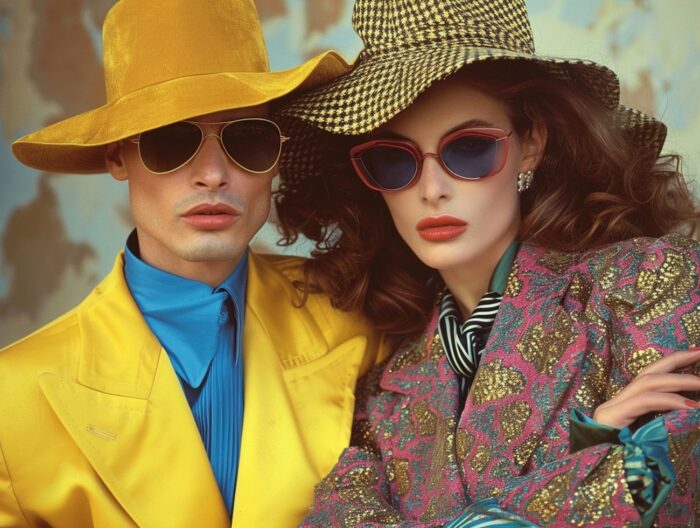
Teen Fashion Icons
The 90s saw the rise of teen-oriented media, which had a significant impact on fashion trends. TV shows, movies, and music videos became major sources of style inspiration for young people.
Notable influences on teen fashion:
- TV shows (Friends, Beverly Hills 90210)
- Movies (Clueless, 10 Things I Hate About You)
- Music icons (Spice Girls, Britney Spears)
- Teen magazines (Seventeen, YM)
I observed how these media outlets created a feedback loop with teen fashion, both reflecting and shaping trends.
Fashion is about dreaming and making other people dream.
This quote captures the aspirational nature of 90s teen fashion. Young people looked to their favorite stars for style cues, dreaming of emulating their looks.
The impact of specific teen icons on fashion trends was remarkable:
| Icon | Fashion Influence |
|---|---|
| Spice Girls | Platform shoes, crop tops |
| Britney Spears | Low-rise jeans, belly shirts |
| Alicia Silverstone in Clueless | Plaid skirts, knee-high socks |
| Jennifer Aniston in Friends | “The Rachel” haircut, slip dresses |
Mall culture played a crucial role in shaping teen fashion. Stores like Gap, Contempo Casuals, and Hot Topic became go-to destinations for young shoppers seeking to recreate looks from their favorite stars.
The influence of teen fashion in the 90s highlighted the growing purchasing power of young consumers and their impact on broader fashion trends.
Eco-Fashion Beginnings
The 90s marked the early stirrings of what we now call eco-fashion. Environmental awareness began to influence clothing choices, sparking a movement that would grow significantly in later decades.
Key aspects of 90s eco-fashion included:
- Use of organic cotton
- Recycled materials in clothing
- Sustainable production methods
- Focus on durability over fast fashion
I noticed a shift in consumer attitudes during this time. People started asking questions about where their clothes came from and how they were made.
The most sustainable garment is the one you already own.
This quote encapsulates the emerging eco-fashion ethos of the 1990s. It emphasized quality over quantity and encouraged people to consider the longevity of their clothing.
Brands leading the eco-fashion charge:
| Brand | Eco-Friendly Approach |
|---|---|
| Patagonia | Recycled polyester fleece |
| ESPRIT | Ecollection using organic cotton |
| Katharine Hamnett | Organic cotton t-shirts with activist slogans |
The beginnings of eco-fashion weren’t without challenges. Sustainable materials were often more expensive, and many consumers were not yet ready to pay premium prices for eco-friendly clothing.
This trend laid the groundwork for the larger sustainability movement in fashion that we see today. It represented a growing awareness of fashion’s environmental impact and a desire for more responsible consumption.
Accessories and Beauty Trends
The 90s were a goldmine for accessory and beauty trends. These elements often defined looks as much as clothing did, adding personality and flair to outfits.
Popular 90s accessories included:
- Chokers
- Butterfly clips
- Plastic jewelry
- Platform shoes
- Tiny sunglasses
In beauty, the trends were equally bold and diverse:
- Thin eyebrows
- Brown lipstick
- Body glitter
- Frosted eyeshadow
- Dark nail polish
I found the 90s approach to beauty refreshingly experimental. It was a time of self-expression through makeup and accessories.
Beauty begins the moment you decide to be yourself.
This quote reflects the 90s attitude towards beauty and accessories. It was about personal style and individuality rather than following strict rules.
The popularity of body modifications also grew:
| Modification | Trend |
|---|---|
| Piercings | Belly button rings, multiple ear piercings |
| Tattoos | Tribal designs, lower back “tramp stamps” |
| Hair | Chunky highlights, crimped styles |
Celebrity influence played a significant role in popularizing these trends. Stars like Gwen Stefani (bindis), Liv Tyler (blue eyeshadow), and Johnny Depp (goatees) set beauty standards that fans eagerly followed.
The 90s accessories and beauty trends were all about making a statement. They allowed for creativity and self-expression in ways that complemented the decade’s diverse fashion landscapes.
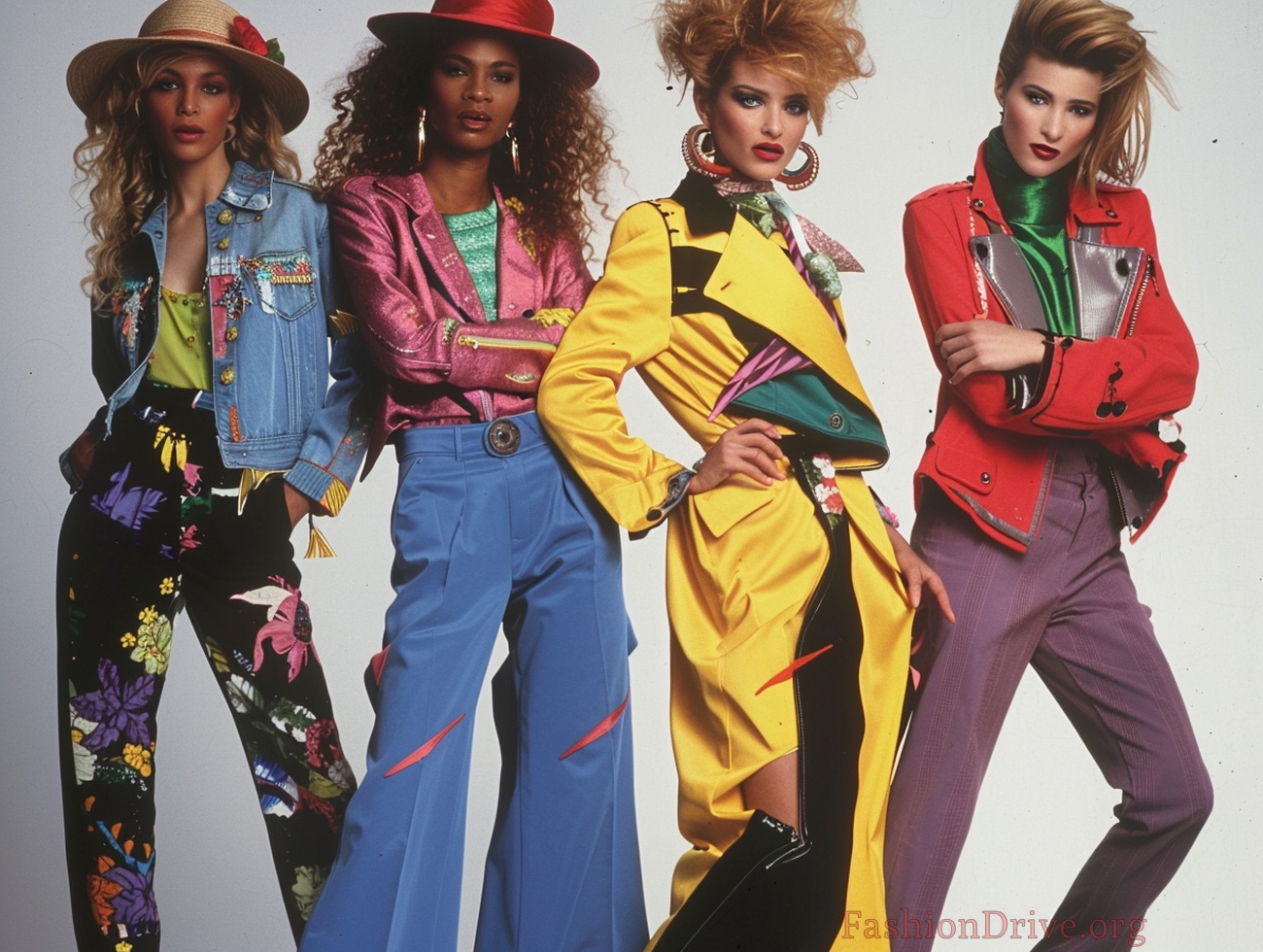
High Fashion Evolution
The 90s saw a significant evolution in high fashion, marked by the rise of avant-garde designers and the growing influence of haute couture on ready-to-wear collections.
Key developments in 90s high fashion:
- Emergence of conceptual designers
- Blending of art and fashion
- Increased focus on runway shows as spectacles
- Influence of street style on luxury brands
I witnessed how designers like Alexander McQueen and John Galliano pushed boundaries, creating collections that were as much about storytelling as they were about clothing.
Fashion is a language that creates itself in clothes to interpret reality.
This quote captures the essence of 90s high fashion – it was about creating narratives and challenging norms through clothing.
Influential designers and their contributions:
| Designer | Signature Style |
|---|---|
| Alexander McQueen | Dramatic silhouettes, dark romanticism |
| Miuccia Prada | Intellectual minimalism |
| Jean Paul Gaultier | Subversive takes on classic styles |
| Rei Kawakubo | Deconstructed forms, asymmetry |
The 90s also saw fashion weeks gain global attention. These events became major cultural moments, attracting celebrities and media from around the world.
High fashion in the 90s wasn’t afraid to provoke or challenge. It set the stage for the increasingly boundary-pushing designs we see on runways today.
Technology’s Impact
The 1990s marked the beginning of technology’s profound impact on the fashion industry. This decade laid the groundwork for the digital revolution in fashion that we’re still experiencing today.
Key technological influences on 90s fashion:
- Rise of online shopping
- Digital printing on fabrics
- Computer-aided design (CAD) in fashion creation
- Early fashion websites and forums
I observed how these technological advancements began to change the way fashion was created, marketed, and consumed.
The future of fashion is happening online.
This prescient quote from the 90s accurately predicted the direction the industry was heading.
Technology’s impact on different aspects of fashion:
| Aspect | Technological Impact |
|---|---|
| Design | CAD software for pattern-making |
| Production | Digital printing for complex patterns |
| Marketing | Early e-commerce and fashion websites |
| Consumption | Online shopping and style forums |
The emergence of fashion-focused websites and early e-commerce platforms began to change how people discovered and purchased clothing. Brands started to explore the potential of reaching customers directly online.
New textile technologies also emerged, allowing for innovative fabrics and manufacturing processes. This led to new possibilities in garment design and production.
While still in its infancy, the intersection of technology and fashion in the 90s set the stage for the digital-first approach that dominates the industry today.
Conclusion
The 1990s left an indelible mark on fashion history. This decade saw a unique blend of styles, from grunge to minimalism, hip-hop to retro revival. The fashion landscape of the 90s was diverse, expressive, and groundbreaking.
Key takeaways from 1990s fashion:
- Subcultures significantly influenced mainstream trends
- Technology began reshaping the industry
- Sustainability in fashion gained early traction
- Gender norms in clothing were increasingly challenged
I’ve observed how many 90s trends continue to influence contemporary fashion. The decade’s impact is evident in current streetwear, minimalist designs, and the ongoing fusion of high and low fashion.
Fashion is a reflection of the times.
This quote encapsulates why 90s fashion remains relevant. It captured the era’s spirit of rebellion, innovation, and self-expression.
Lasting influences of 90s fashion:
| Trend | Contemporary Impact |
|---|---|
| Grunge | Inspiration for modern streetwear |
| Minimalism | Continued popularity of clean, simple designs |
| Sportswear | Athleisure as a major fashion category |
| Eco-fashion | Growth of sustainable and ethical fashion |
The 90s were a pivotal time for fashion. The decade’s diverse fashion landscape paved the way for the eclectic, individual-focused style we see today. From the rise of supermodels to the beginnings of online shopping, the 90s set the stage for many aspects of contemporary fashion.
As we continue to revisit and reinterpret 90s styles, it’s clear that this decade’s fashion legacy is far from over. Its influence continues to shape how we dress, shop, and express ourselves through clothing.

